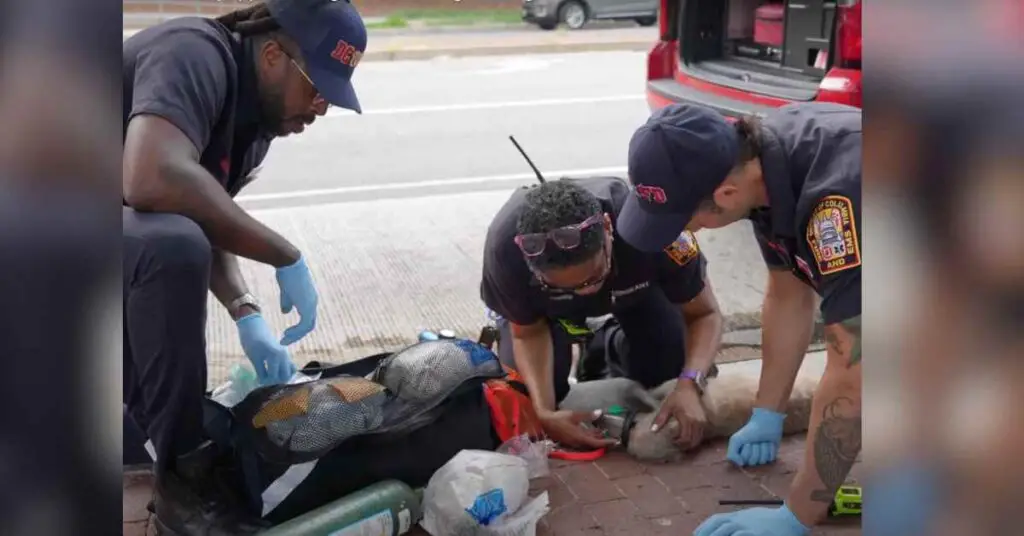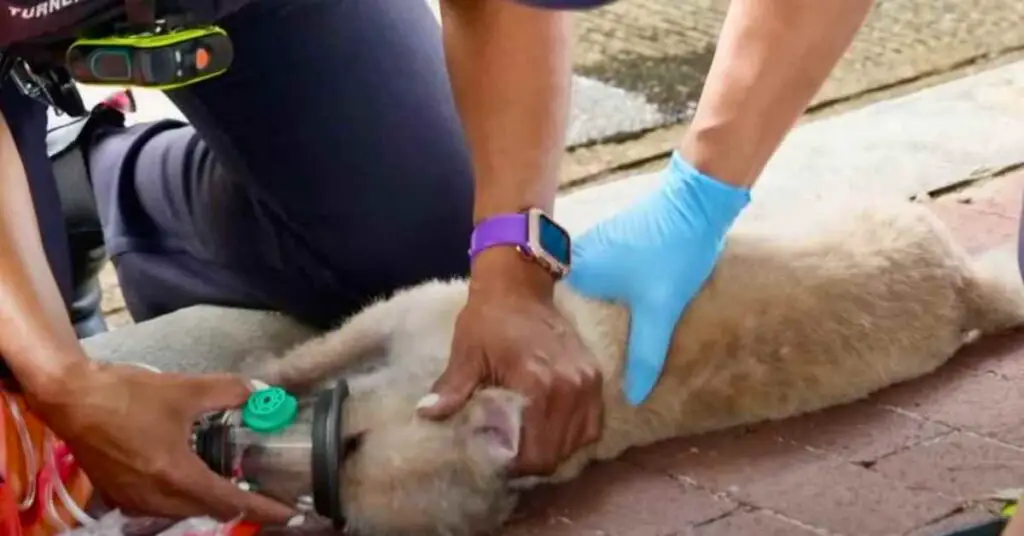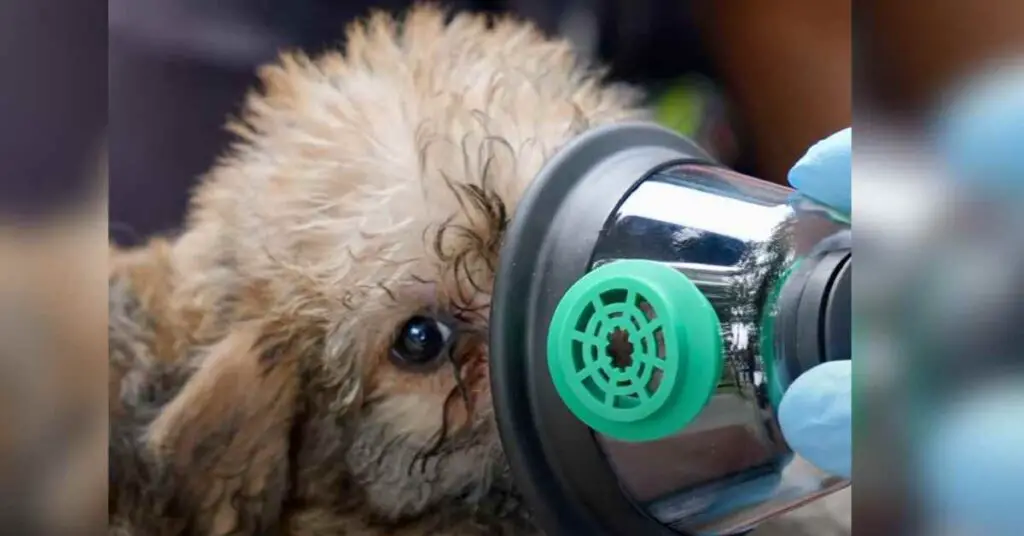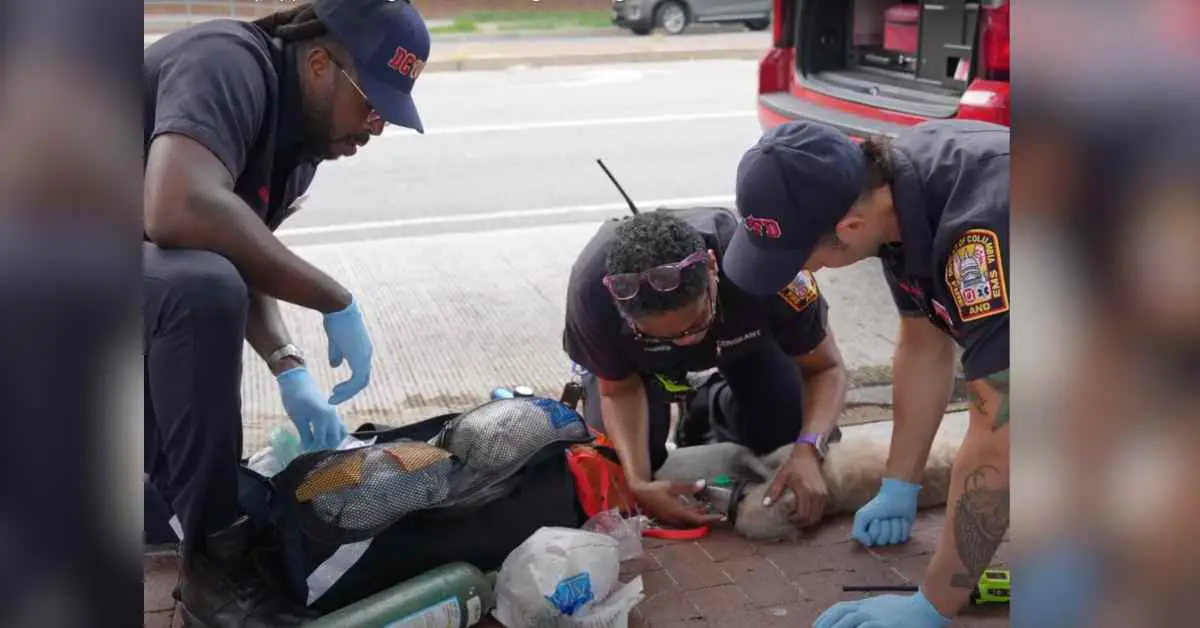Our firefighters are heroes who put their lives at risk to save others. Usually, when they aren’t saving cat’s stuck up trees, firefighters are saving people. However, in this story, they had a few adult dogs and puppies to rescue.

Source: WUSA9
After pulling two puppies and six dogs from a burning building, one of the dogs was found lifeless. With the determination you’d expect from a firefighter, they quickly attached an oxygen mask and began performing CPR.

Source: WUSA9
This life-saving technique isn’t just for humans, it can also be critical for pets in emergencies, providing them with the chance to breathe again and ultimately survive the ordeal.

Source: WUSA9
Amazingly the CPR and oxygen revived this beautiful dog and he was taken to the vets to recover. Let’s take a closer look at CPR on dogs and how to protect your dog from fires.
How to Perform CPR on Dogs
If a dog is unresponsive and not breathing, immediate action is required. Here’s how to determine if your dog needs CPR:
• Check for a pulse by feeling the inside of the back leg at the femoral artery.
• Observe if the chest is rising and falling, indicating breathing.
Step-by-Step Guide to Dog CPR
1. Position the Dog Properly: Lay the dog on its right side on a flat surface.
2. Clear the Airway: Open the dog’s mouth, pull the tongue forward, and check for any obstructions in the throat.
3. Chest Compressions:
• For small dogs (under 30 pounds), use one hand to compress the chest just behind the front legs.
• For larger dogs, place one hand over the other and compress the chest with both hands.
• Compress the chest to about one-third to one-half the depth of the chest, at a rate of 100-120 compressions per minute.
4. Rescue Breaths: After 30 compressions, close the dog’s mouth and breathe into its nose until you see the chest rise. Give two breaths and then continue with chest compressions.
5. Continue the Cycle: Repeat the cycle of 30 compressions and two breaths until the dog begins to breathe on its own or professional help arrives.
When to Stop CPR
If after 20 minutes of CPR the dog has not responded, it’s important to seek immediate veterinary assistance. Continuing CPR beyond this point may not be effective.
Protecting Your Pets from Fires
Creating a Fire Escape Plan for Pets
Having a plan in place can save your pet’s life during a fire emergency:
• Know Your Pet’s Favorite Hiding Spots: In the event of a fire, pets often hide due to fear. Knowing where they are likely to go can save precious time.
• Assign a Pet Caregiver: Designate someone in your household to be responsible for pets during an evacuation.
• Pet Identification: Ensure your pets are microchipped and wear collars with ID tags, making it easier to reunite if they get lost.
Pet Fire Safety Essentials
• Smoke Detectors: Install smoke detectors and regularly check their batteries. Consider pet-alert window decals to inform firefighters of pets inside.
• Pet Safety Gear: Invest in fire safety gear for pets, such as oxygen masks designed for animals, which some fire departments carry.
• Emergency Kit: Prepare a pet emergency kit with items like food, water, medication, a leash, and a blanket, stored near an exit.
Training Your Pet for Emergencies
• Basic Commands: Teach your pets basic commands like “come” and “stay” to help guide them during emergencies.
• Crate Training: Train your pet to be comfortable in a crate, as this can be a safe way to transport them during an evacuation.
Being Prepared Saves Lives
Whether it’s knowing how to perform CPR or having a fire safety plan, being prepared can make all the difference in an emergency. Your quick actions and preparedness can protect your pets and ensure they survive even the most unexpected situations.

